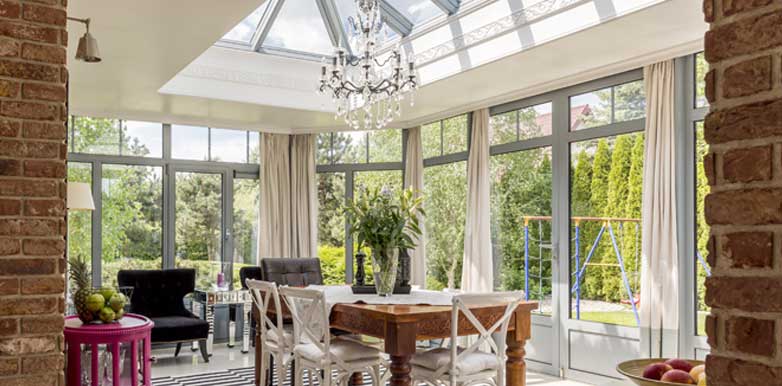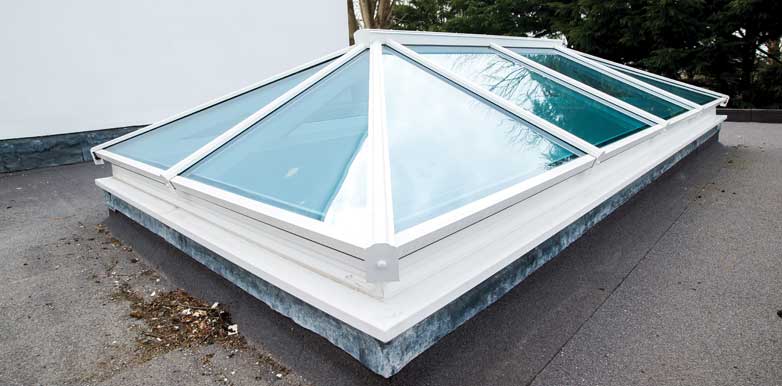Does a Roof Lantern Need Planning Permission?

Roof lanterns are a fantastic way to let a substantial amount of natural light into your home. Perfect for brightening up gloomy areas, roof lanterns are also often installed above kitchens or dining areas, to add a little sunshine to every meal. Plus, thanks to numerous modern innovations, roof lanterns often come with stunning visuals and excellent benefits and features. We supply a brilliant range of modern roof lanterns, including the Atlas Contemporary Roof Lantern.

However, one question we often receive is whether or not roof lanterns require planning permission, and what the rules are around that. Sadly, the answer is, as always, “it depends”. Numerous factors come into play here, including where you live, the sort of home you have, and what type of roof lantern you’d like to install.
Planning Permission for Roof Lanterns
If you're planning on installing a roof lantern into your home, you need to be aware of the rules around planning permission. Roof lanterns generally fall afoul of planning rules due to their height, as a new roof lantern can often sit above your existing roofline. Planning permission requirements can vary greatly around the country, so it's important to consult your Local Planning Authority as a first port of call. Fortunately, most roof lantern installations in the UK will not require planning permission, but be aware of the following guidelines:
- Roof lanterns and related windows must not extend 150mm above the sloping plane of the existing roof
- Your roof lantern can be no higher than the highest part of the existing roof
- Roof lanterns and related windows that are placed in a side elevation roof slope must use obscure-glazing
- No roof openings should be present, unless the height is at least 1.7m above the floor
If you live in a Grade 1 or 2 listed property, we'd recommend consulting your Local Authority or Conservation Officer. Sometimes you may be able to have a roof lantern that is flush with the roof so that externally any change is kept to a minimum, but this will depend on your individual property.

Building Regulations for a Roof Lantern
Although your project may not need planning permission, there are building regulations that apply to roof lanterns. Due to the complex nature of the project, you will need to consult a structural engineer before installing a roof lantern.
Structural Integrity
Your structural engineer will be in the best position to advise you on this point. As there will need to be an alteration to your roof, significant work may be required for your roof to be able to support its own weight, and the weight of your new lantern. Installing roof lanterns often involves cutting through rafters or joists, so you can see why structural integrity is such a concern! Adhering to building regulations here will ensure that your project is completed safely.
Energy Efficiency
Energy efficiency is often the biggest worry for homeowners when installing their new roof lantern. Building regulations need to ascertain that excessive heat is not going to be lost from your home, and will usually specify a U-Value (What Are U-Values?) that your lantern cannot exceed. You can learn more about this in Part L of the building regulations.
Weatherproof
A roof lantern will need to be installed correctly so that the edges are sealed properly, usually with lead flashing. It will also need to be built to withstand severe weather conditions, and as such roof lanterns are often rigorously tested against water pressure, the weight of snow, and other issues.
Ventilation
Your roof lantern will also need to provide sufficient ventilation for the room below, which is why many come with air vents built-in, but always check before you buy.
Fire Performance
Finally, your roof lantern will need to hold its own against fire. However, this is generally only the case if your lantern will be in close proximity to a boundary. Your Local Planning Authority will have more information regarding this.
This might all sound quite complicated, but you will be able to find out from the retailer that you purchase the roof lantern from and your structural engineer, most of the information that you will need to find out whether your roof lantern complies to the building regulations. Take a look at more information on building regulations approval on the Planning Portal website.

Roof Lanterns and Permitted Development
We'd always recommend consulting your Local Planning Authority before you buy a roof lantern, as whilst you may not require planning permission, you could obtain a permitted development confirmation. You can get this from your local council as written proof that your roof lantern falls within planning guidelines, this will give you peace of mind and may also come in handy if it is raised as a query if you were to move and sell your house. Find your Local Planning Authority.
In Closing
You should now have a clearer picture of whether or not your roof lantern project will require planning permission. If you are going to go ahead, we'd recommend that your lantern is fitted by a Fenestration Self-Assessment (FENSA) installer, as they can self-certify the installation, and should know all about planning and building regulation requirements for your area.
Take a look at our fantastic range of roof lanterns today.